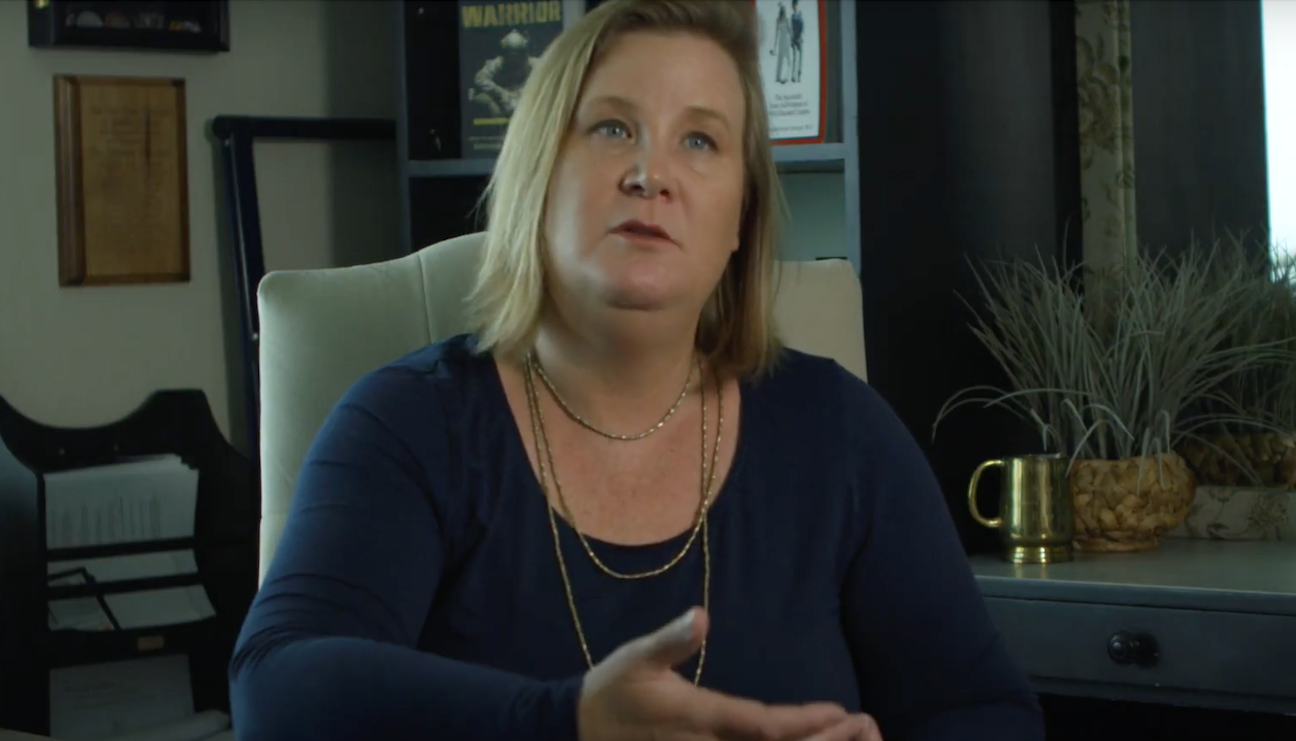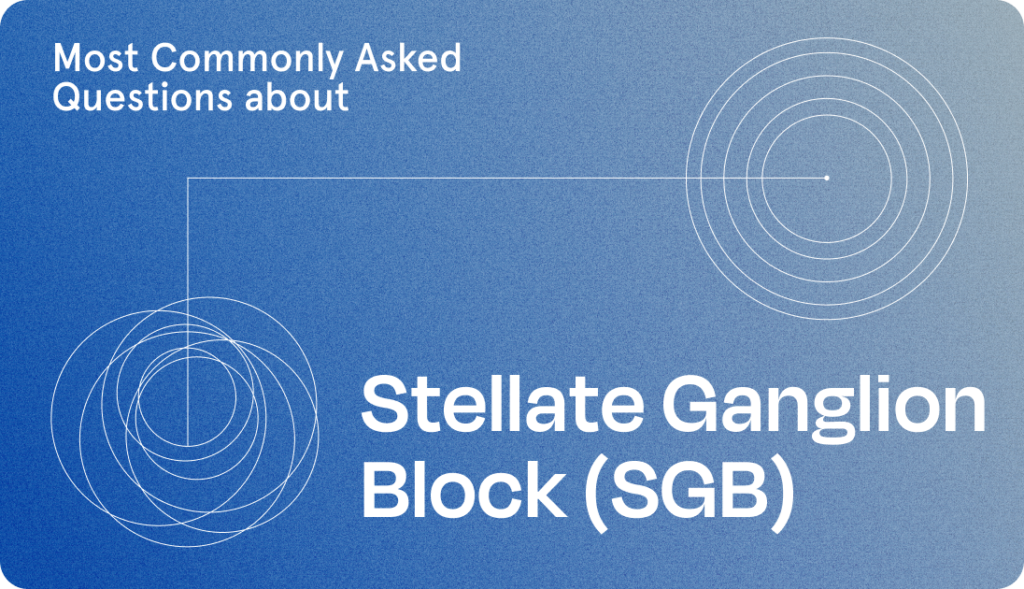If you’re asking yourself, “Do I have PTSD?”(which Stella refers to as PSTI) and think that you may be experiencing symptoms, take this PTSD test online. Or, contact our Patient Care Team directly by calling 1-866-497-9248 or emailing [email protected].
Spotting the signs and symptoms of PTSD can be difficult. Research suggests that only 2-11% of people experiencing trauma symptoms are actually diagnosed.1 This is one of the many reasons Stella is dedicated to the education of the impact of emotional trauma and the available treatment options. We strongly believe that demystifying the impact and treatment of trauma reduces stigmas associated with PTSD.
While PTSD has been referred to as a disorder, many claim it’s an injury. Stella and others have suggested a new term – Post Traumatic Stress Injury (PSTI) – in place of Post Traumatic Stress Disorder (PTSD)2.
What Are the 17 Symptoms of PTSD?
Trauma can cause symptoms that diminish our capacity to experience warm and loving feelings from others (i.e., emotional numbness), which can lead to profound negative changes to our self-image and identity and spark fears that often limit our enjoyment of pleasurable activities. When we have symptoms following trauma exposure, we may have recurring feelings of helplessness and horror. We also commonly experience panic attacks, feelings of self-blame and shame, chronically disrupted sleep, and relationship conflicts with loved ones.
Read on to learn more about the 17 most common symptoms.
Agitation
Agitation is a feeling of anxiety or nervous excitement. Like many symptoms experienced after trauma, agitation is understood on a spectrum. Words like restless, uneasy, and tense generally describe mild agitation. When we’re agitated, we may be fidgety or find it hard to sit still. Agitation can build to the point that we’ve become short-tempered or continually irritable. Untreated trauma can contribute to aggressive or harmful behavior toward ourselves or others.
Nervousness and anxiety
It’s normal to worry about stressful situations (like a job interview or putting an offer in on a house) before they happen. But when we experience symptoms following trauma exposure, these nervous feelings are persistent and all-consuming to the point that they disrupt everyday life. Tense, worried thoughts often manifest physically. For example, when we’re exposed to trauma and experience anxiety, we might have an increased heart rate, breathe rapidly, sweat, or feel tired.
Problems with concentration or thinking
The body’s fight-or-flight response turns on when we experience trauma or a very stressful event. And sometimes it stays on long after the traumatic event, which can make us feel like we need to be on constant high alert. This, in turn, makes it challenging to concentrate or think clearly.
Problems with memory
After experiencing trauma, the fight-or-flight response may become “stuck” in an over-activated state that causes nerve growth around the amygdala (also known as the brain’s “fear center”).3 The amygdala – along with the hippocampus and prefrontal cortex – plays a role in the brain’s ability to process stress and memory. Memory loss can also occur as a defense mechanism.
Headaches
When the fight-or-flight response is triggered, the body releases cortisol and adrenaline – two hormones that help it respond to a threat. When we experience symptoms of trauma, our fight-or-flight response can become locked into a continually activated state, and, in this state, our bodies produce hormones which can impact the body’s nervous system, sometimes resulting in headaches4.
Depression and crying spells
Depression negatively impacts how we think and feel about ourselves. It can also influence the way we behave. When we are exposed to trauma and experience depression, we may feel sad, lose interest in activities we enjoyed before their trauma, feel guilty and worthless or notice changes in our appetite. Depression can also cause increased fatigue and disrupted sleep – we might have trouble sleeping while others sleep too much. And at its worst, depression can lead to suicidal ideation.
Suicidal thoughts or attempts
We can be so overwhelmed by our symptoms that we sometimes consider harming ourselves or suicide. When we’re experiencing trauma symptoms, we can also experience depression, panic attacks, anxiety, and substance abuse and are at higher risk for suicide. In fact, people diagnosed with trauma symptoms are 9.8 times more likely to die by suicide.5
If you are thinking about suicide or need emotional support, please text “HOME” to 741741 for free, 24/7 crisis counseling from Crisis Text Line. We want you to know that you are not alone and that there is hope.
Mood swings
Trauma triggers and other common experiences like panic attacks and bursts of irritability can cause sudden mood changes following trauma exposure. While bipolar disorder is a different condition, the mood swings that come with trauma exposure may sometimes be mistaken for bi-polar disorder, and in some cases, we may have both conditions. Working with a licensed clinician is the key to figuring out the right diagnosis.
Obsessive-compulsive tendencies
While being diagnosed with trauma symptoms and Obsessive-Compulsive Disorder (OCD) are different conditions, after we’re exposed to trauma, we may behave in ways that look similar to OCD. For example, we may check the locks on their doors several times before leaving the house in response to the hypervigilance that can come after a trauma.
OCD and those diagnosed with trauma symptoms can both suffer from intrusive, disturbing thoughts. When we experience both conditions, we often feel a constant impending sense of doom or dread.
Panic episodes
Feeling afraid is common when we’re exposed to trauma. When we are suddenly overwhelmed with intense fear, it could mean that we are experiencing a panic attack. Sometimes these episodes seem to come without warning or reason. Other times, they happen in response to a reminder of our trauma.
During a panic attack, we may feel like we’re not in control of ourselves or afraid of dying. Chest pain, trembling, hot flashes or chills, a choking sensation, and other physical symptoms are commonly associated with panic attacks.
Paranoia
In reaction to traumatic or highly stressful events, we can become paranoid. Our belief that we are unsafe causes us to act highly guarded and suspicious of others. We adopt this way of thinking to protect ourselves from being harmed or harassed.
Shakiness
Shakiness is related to many common trauma symptoms like agitation, nervousness, anxiety, panic episodes, and substance abuse.
Substance abuse
When experiencing symptoms following trauma, we may use drugs and alcohol to cope as taking substances can temporarily reduce or numb the upsetting feelings we’re experiencing.
Are There Other PTSD Symptoms?
Yes. Experiencing symptoms of trauma can also commonly include flashbacks, hypervigilance, nightmares, and sleep disturbances.
Trauma affects us all differently.
Treating Symptoms of PTSD with Stella
In recent years, the Stellate Ganglion Block (SGB) has emerged as a promising treatment option for symptoms of trauma. Stella founders Dr. Eugene Lipov and Dr. Shauna Springer recently published a study with other trauma experts that indicates that the SGB is an effective treatment for trauma symptoms regardless of gender, trauma type, PTSD-related medication use, history of suicide attempt, or age.6
SGB by Stella has the potential to help millions of people with emotional trauma experience lasting relief. To learn more, please visit our “How It Works” page.
- Ellen C. Meltzer, MD MSc,1 Tali Averbuch, MPP,1 Jeffrey H. Samet, MD MA MPH,1,5 Richard Saitz, MD MPH,1,3,4 Khelda Jabbar, MD,6 Christine Lloyd-Travaglini, MPH,7 and Jane M. Liebschutz, MD MPH1,5 Discrepancy in diagnosis and treatment of post-traumatic stress Itkowitz, C. (2021, October 28). Dropping the ‘D’ in PTSD is becoming the norm in Washington. The Washington Post. Retrieved February 2, 2022, from https://www.washingtonpost.com/news/powerpost/wp/2015/06/30/dropping-the-d-in-ptsd-is-becoming-the-norm/
- disorder (PTSD): Treatment for the wrong reason https://www.ncbi.nlm.nih.gov/pmc/articles/PMC3310322/
- Eugene G.LipovaJaydeep R.JoshiaSarahSandersaKonstantin V.Slavinb A unifying theory linking the prolonged efficacy of the stellate ganglion block for the treatment of chronic regional pain syndrome (CRPS), hot flashes, and posttraumatic stress disorder (PTSD) https://www.sciencedirect.com/science/article/abs/pii/S0306987709000413
- B. Lee Peterlin DO,Gretchen E. Tietjen MD,Jan L. Brandes MD,Susan M. Rubin MD,Ellen Drexler MD,Jeffrey R. Lidicker MSc,Sarah Meng DO Posttraumatic Stress Disorder in Migraine https://headachejournal.onlinelibrary.wiley.com/doi/10.1111/j.1526-4610.2009.01368.x
- National Center for PTSD. PTSD and Death from Suicide. Retrieved 9/28/21 from https://www.ptsd.va.gov/publications/rq_docs/V28N4.pdf
- Lipov, E. G., Jacobs, R., Springer, S., Candido, K. D., & Knezevic, N. N. (2022). Utility of Cervical Sympathetic Block in Treating Post-Traumatic Stress Disorder in Multiple Cohorts: A Retrospective Analysis. Pain Physician, 25(1), 77-85. Available from: https://www.painphysicianjournal.com/current/pdf?article=NzM5Nw%3D%3D







